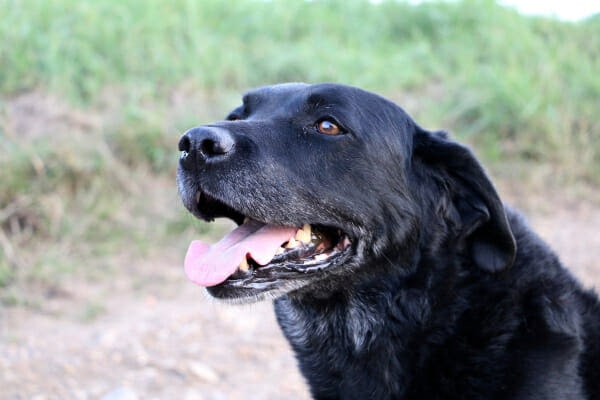What is “normal” breathing for a dog?
Being a hound, Jake likes to spend some of his day lounging around the house. At rest, he should be breathing easily through his nose with his mouth closed. If I were to count how many times he breathes (inhales and exhales) in minute, it would probably be around 10 to 35 times. (For more details on how to measure your dog’s respiratory rate, check out my blog Keeping a “Pulse” on Your Dog’s Vital Signs).
Sometimes during REM sleep, he will be breathing fast while sleeping. He may also whimper, twitch, or growl as he dreams. As long as I can wake him up and he acts (and breathes) normally once he is awake. this isn’t a cause for concern. These actions are probably just a dream, not something more scary like a seizure in dogs.
If he goes outside and romps with my kids in warm weather, he may start panting with an open mouth and his tongue sticking out. This is a normal way for dogs to cool down since they don’t have as many sweat glands as people do. As long as he isn’t panting extremely hard, is still acting normal, and stops panting once he cools down inside, I’m not too worried.

Causes of Fast Breathing in Dogs
Fast breathing in dogs may indicate a number of conditions, injuries or illnesses and should be evaluated by your veterinarian as soon as possible. Some potential causes include:
What is Breathing Fast While Resting?
Many factors control fast breathing in dogs, and sometimes the underlying problem can be life-threatening, especially if it happens when your dog is at rest. You should definitely be watchful if your pup has a breathing rate over 30 breaths a minute, because this is considered too fast. Excessive and rapid breathing while resting is called tachypnea and may be a symptom of the following medical conditions:
The severity of your dog’s tachypnea will depend on the underlying condition causing him to breathe fast. It is important to bring your dog to the veterinarian to determine how serious the threat is and how to treat rapid breathing best.